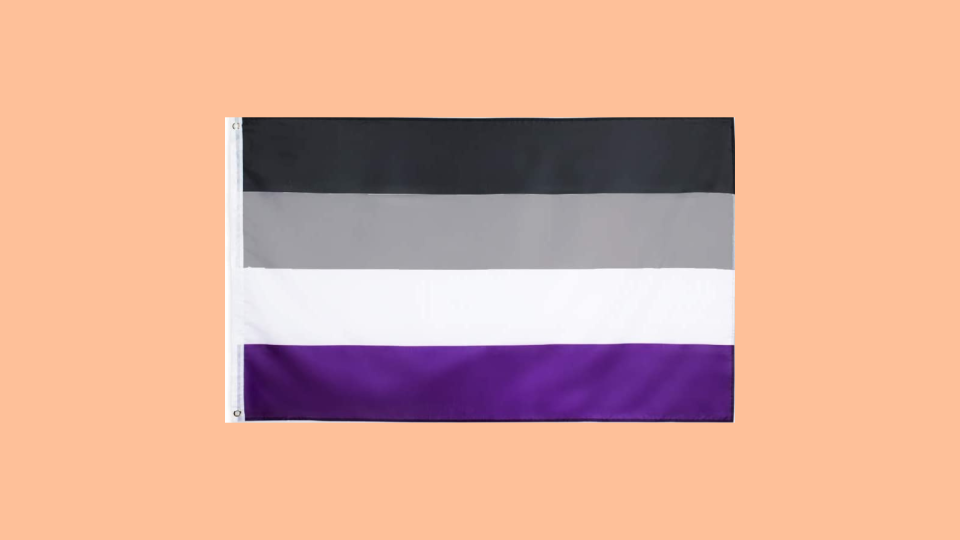What does 'asexual' mean? Exploring the meaning of the 'A' in LGBTQIA
According to a 2023 Gallup poll, 7.6% of U.S. adults self-identify as lesbian, gay, bisexual, transgender or something other than heterosexual. In the last 11 years, this has increased by 4.1 percentage points.
Today, over 20% of Gen Z adults – those between the ages of 18 to 26 – identify as part of the LGBTQ+ community, Gallup reports. The rising numbers come in part due to "larger society changing" with people feeling more comfortable sharing their identities, experts previously told USA TODAY.
Maybe you've seen or heard terms used to describe someone's identity. You might have a friend or family who identifies as "asexual," but were unsure of the exact definition. Fret not, we've got you covered.
What does the 'A' in LGBTQIA for?
The 'A' in LGBTQIA stands for "asexual."
"LGBTQ" is an acronym. Over the last few decades, new letters have been added to the lineup.
Each letter in LGBTQ means:
G: Gay
T: Transgender (differs from the rest of the acronym as it relates to gender and not sexual identity)
Q: Added to the acronym at the turn of the century to represent people identifying as queer, a more ambiguous term (reclaimed since its use as a derogatory term for LGBTQ individuals) allowing people to avoid rigid labels. Some also take the Q to mean questioning.
In recent years, I and A have been added, meaning intersex and asexual, respectively.
A plus sign is often attached at the acronym's end to include identities that may not fit into the other letters, such as pansexual or Two-Spirit.
When is Pride Month 2024? How the celebration of LGBTQ+ identities came to be.
What does 'asexual' mean?
Asexuality is an umbrella term, and being asexual exists on a spectrum. According to The Trevor Project, those who identify as asexual may have little interest in having sex, though they might desire emotionally intimate relationships.
An asexual person can be any gender or sex. "There is no asexual 'type,'" whatisasexuality.com states.
Other identities within the asexuality spectrum include:
Demisexual: People who experience sexual attraction when they form a strong emotional bond with another person.
Gray-A/Gray-ace: People who identify between being asexual and sexual.
Queerplatonic: People who experience non-romantic relationships with an intense emotional connection beyond traditional friendship.
Asexual people may experience "little to no desire" when it comes to sexual attraction, Aubri Lancaster, a sex educator who focuses on asexuality and aromanticism, previously told USA TODAY. Sexual attraction is a person's desire to be intimate with another. Someone can be sexually attracted to others without experiencing romantic attraction. While some who identify as asexual have no desire to have sex, others might want to.
Those who identify as asexual may experience romantic or aesthetic attraction to others, experts previously told USA TODAY. Romantic attraction is when someone desires a deep connection with another. Aesthetic attraction is one's appreciation for another's appearance or physical beauty and is not inherently connected to romantic or sexual attraction.
What does 'ace' mean?
"Ace" is a shortened term for asexual. Those who identify as ace often use the terms "hetero-," "homo-," "bi-," and "pan-" in front of the word "romantic" to describe who they experience attraction to, according to The Trevor Project.
For example, someone who is "homo-romantic" may be emotionally attracted to someone of the same sex or gender, but not sexually attracted to them.
Pride 2024: Latest news and events honoring LGBTQ rights
Misconceptions on asexuality
There are many misconceptions about asexuality and what it means to identify as asexual.
One common misconception is that asexuality is similar to abstinence or celibacy. This is untrue.
Unlike celibacy or abstinence – which can be temporary decisions based on personal beliefs or circumstances – asexuality is an orientation and identity; it is not a choice, but who someone is.
What are the colors of the asexual flag?
The colors of the asexual flag are black, gray, white and purple. Each color has its own meaning:
Black: Asexuality
Gray: Gray-Asexuality and Demisexuality
White: Non-asexual partners and allies
Purple: Community

What are the colors of the Asexual Flag? What to know about meaning and asexual identity.
Dig deeper: Learn the meanings, and origins of Pride flags
Pride Flag | Progress Pride Flag | Lesbian Pride Flag | Bisexual Pride Flag | Pansexual Pride Flag | Asexual Pride Flag | Intersex Pride Flag | Gender Identity Flags | Trans Pride Flag
Just Curious for more? We've got you covered
USA TODAY is exploring the questions you and others ask every day. From "What do the colors of the Pride Flag mean?" to "When was gay marriage legalized in the U.S.?" to "What does deadnaming mean?" − we're striving to find answers to the most common questions you ask every day. Head to our Just Curious section to see what else we can answer.
This article originally appeared on USA TODAY: What is asexuality? What the 'A' in LGBTQIA stands for.


